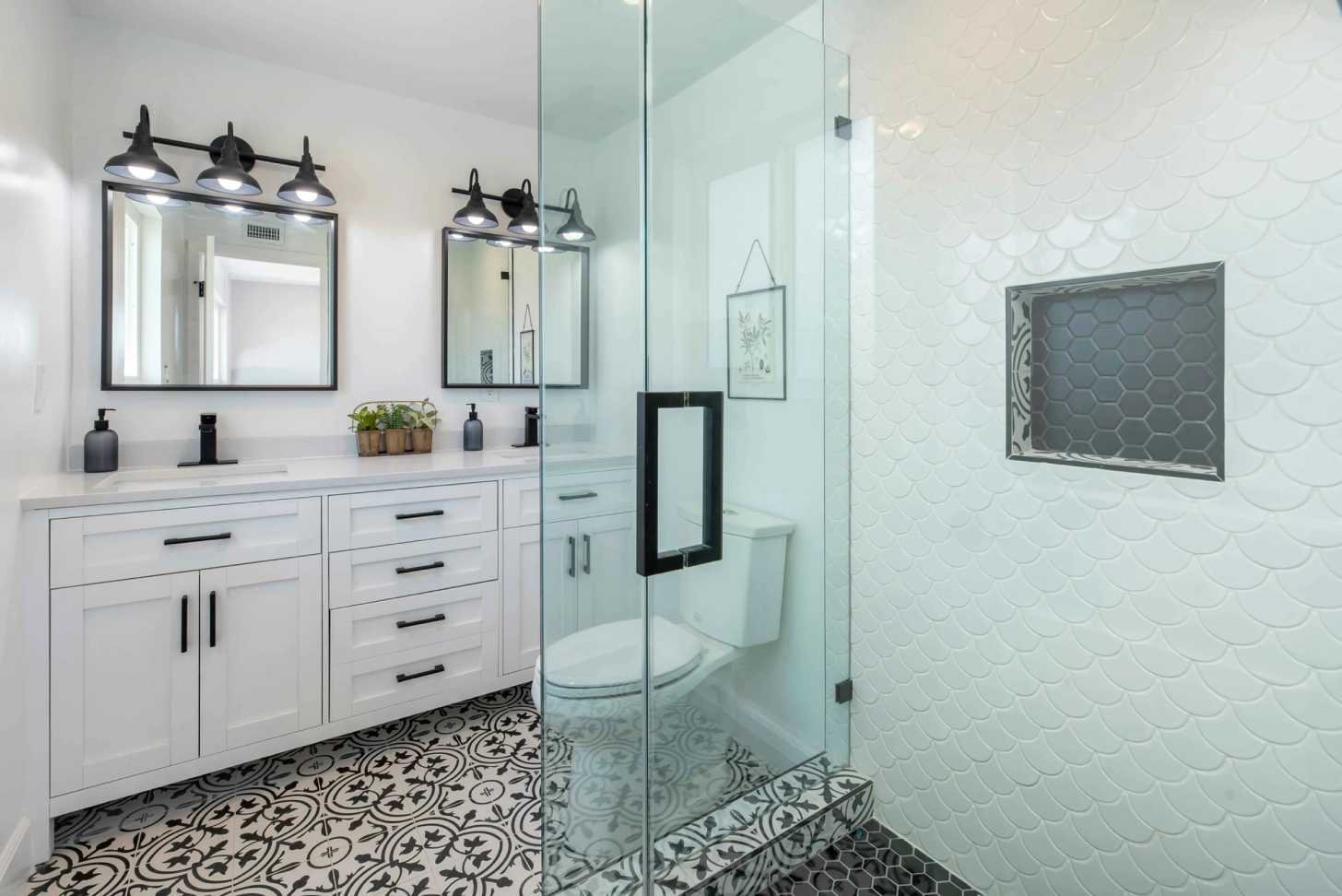The first step in any bathroom remodel is planning and budgeting. This phase involves determining your goals for the remodel, such as improving functionality, updating aesthetics, or increasing home value. Start by assessing your current bathroom and identifying the areas that need improvement. Note any fixtures or features that must be replaced or upgraded.
Planning and Budgeting
Once you have a clear idea of your goals, set a realistic budget. Consider the cost of materials, labor, permits, and any unexpected expenses that may arise during the project. Research the average costs of bathroom remodels in your area to better understand what to expect. It’s also wise to set aside a contingency fund for unforeseen issues that may occur once the remodeling begins.
During the planning stage, create a detailed timeline for your project. This will help you stay organized and ensure that each remodel phase is completed promptly. Additionally, decide whether to hire a professional contractor or undertake the project as a DIY endeavor. Hiring a professional can provide expertise and ensure the job is done correctly, while a DIY approach may save money but require more time and effort.
Design and Layout
With a solid plan and budget in place, the next step is to focus on the design and layout of your new bathroom. This phase involves choosing the style, color scheme, and specific features you want to incorporate. Consider consulting with an interior designer to help you create a cohesive and functional design.
Begin by sketching a bathroom layout, noting the placement of existing plumbing and electrical systems. This will help you understand the limitations of your space and determine where new fixtures can be installed. Remember that moving plumbing and electrical lines can significantly increase the cost of your remodel, so it’s often best to work within the existing layout.
When selecting materials and finishes, prioritize durability and water resistance. Bathrooms are high-moisture environments, so choose materials that can withstand humidity and frequent use. For example, ceramic or porcelain tiles are famous for flooring and walls due to their water-resistant properties and comprehensive design options.
Demolition and Structural Work
Once the design and layout are finalized, it’s time to begin the demolition and structural work. This phase involves removing existing fixtures, cabinetry, and any other elements that will be replaced. Be sure to take proper safety precautions, such as wearing protective gear and shutting off water and electricity to the bathroom.
During demolition, inspect the underlying structure of your bathroom. Look for signs of water damage, mold, or structural issues that need to be addressed before proceeding with the remodel. It’s crucial to repair any damage and ensure the subfloor and walls are in good condition to support the new fixtures and finishes.
If your remodel includes structural changes, such as expanding the bathroom or altering the layout, now is the time to make those modifications. This may involve framing new walls, installing support beams, or reinforcing the floor. Ensure any structural changes comply with local building codes and obtain the necessary permits before beginning this work.
Plumbing and Electrical Updates
With the structural work complete, the next step is to update the plumbing and electrical systems. This phase is critical to ensuring the functionality and safety of your new bathroom. Depending on the scope of your remodel, you may need to relocate plumbing lines, install new pipes, or upgrade the electrical wiring to accommodate new fixtures and appliances.
Hire a licensed plumber and electrician to handle these updates, as they have the expertise to ensure the work is done correctly and in compliance with local codes. This is especially important for complex tasks such as installing new showers, bathtubs, or heated flooring systems.
During this phase, consider incorporating modern amenities and energy-efficient fixtures. For example, low-flow toilets and faucets can help reduce water consumption, while LED lighting can lower energy usage. Additionally, installing a ventilation fan can help prevent moisture buildup and reduce the risk of mold growth.
Installation and Finishing Touches
The final phase of your bathroom remodel involves installing the new fixtures, cabinetry, and finishes. This is where your vision comes to life, and the space begins to take on its new form. Start by installing the more prominent fixtures, such as the bathtub, shower, toilet, and vanity. Ensure each piece is aligned correctly and securely fastened to prevent future issues.
Next, focus on the walls and flooring. Install tiles, paint, or apply other finishes according to your design plan. Take time to ensure a professional and polished look, as these surfaces will be evident and subject to frequent use. If you’re installing tile, be sure to use proper waterproofing and sealing techniques to prevent water damage.
Once the significant installations are complete, add the finishing touches that will enhance the functionality and aesthetics of your bathroom. This includes installing lighting fixtures, mirrors, towel racks, and other accessories. Pay attention to details such as caulking and grout lines to ensure a clean and finished appearance.
Finally, thoroughly inspect your new bathroom to ensure everything functions correctly and meets your expectations. Address any minor issues or adjustments needed before considering the project complete.



